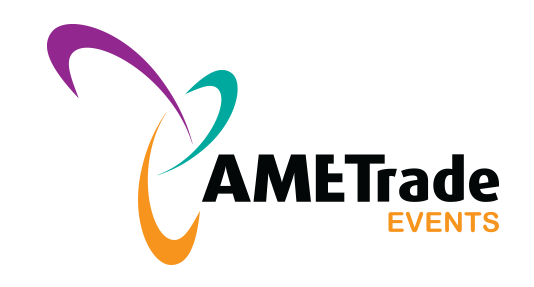Senior Mining Specialist, The World Bank
Question: Can you share with us a brief overview of how the World Bank is working with Zambia to harness the economic benefits of its mineral resources?
The World Bank has been supporting the Zambian government to harness the economic benefits of its mineral resources through several initiatives aimed at improving the governance, transparency, and efficiency of the mining sector. Most of the support has been through projects or Advisory Services and Analytics (ASA). For examples through the Zambia Mining Investment and Governance Review, the Zambia Country Private Sector Diagnostic (with a deep dive on mining) and the Zambia Energy Transition Minerals (ETM) Roadmap which is near finalization. These analytical pieces assisted to identify bottlenecks in Zambia’s mining sector. The reviews highlighted the need for stability in mining and fiscal policies, development of domestic procurement policies, improved budget transparency, and better infrastructure development, particularly in energy.
Budget support operations—including the Zambia Macroeconomic Stability, Growth, and Competitiveness Development Policy Financing (DPF)[1] and the Zambia Climate and Economic Resilience Programmatic DPF with a Catastrophe Draw Down option (Cat-DDO)—support Zambia in restoring macro-fiscal stability and promoting inclusive, private-sector-led economic growth. The DPFs support reforms to improve fiscal management, reallocate public spending, and ensure affordable access to electricity. The operations also seek to strengthen the medium-term fiscal framework with fiscal rules to manage mineral revenue volatility, aiming to build fiscal buffers and smooth spending over the economic cycle. These reforms are complemented by World Bank financing and technical assistance in various sectors, including mining.
Through projects like the Zambia Mining Environmental Remediation and Improvement Project (ZMERIP)[2], the World Bank supported a process of reducing environmental pollution from legacy mining activities. The project improved environmental health, and building institutional capacity for better environmental management, create jobs, improved agricultural productivity on remediated land, and enhance the overall environmental quality, benefiting local communities.
Minerals Value Chain Monitoring Project (MVCMP): project focused on integrating IT solutions across institutions and stakeholders in the mineral value chain. The MVCMP aims to create an online, integrated, and centralized system to improve the accuracy and reliability of mining production and export data. This helped in better management of the minerals value chain and ensures that the government receives adequate revenue from mineral resources.
Zambia Agribusiness and Trade Project II: Through this project, there is planned support to strengthen business regulations associated to trade, implement AfCFTA trade commitments and improve the trade facilitation system. In particular the project has an extensive focus on automating Zambia’s trade system, implementing a risk-based system for border control alongside coordinated border management and strengthening quality infrastructure. These reforms will also have an impact in facilitating trade and development of Zambia’s mineral sector.
Skills for Training and Resilience and Industry Valued Employment (STRIVE): The World Bank is working with the government to design a new project focused on skills aimed at enhancing access and quality of skills development for Zambian youth with a focus on mining, agriculture and tourism sectors.
These efforts are part of a broader strategy to ensure that Zambia can fully leverage its rich mineral resources for sustainable economic development and improved livelihoods for its people.
Going forward the World Bank is working closely with Cooperating Partners (CP) within Zambia and internationally to coordinate support. A new local multi-donor trust fund (ZamCUP) aims to mobilize CP support to operationalize the Energy Transition Minerals Roadmap within an initial focus on supporting the operationalization of the newly created Minerals Regulation Commission. Separately, US$1.2 million has been allocated through the World Bank’s Extractives Global Programmatic Support trust fund to support Zambia EITI. This work will lay a foundational basis for further resources to support the government of Zambia.
Qn. How optimistic are you generally about the push for unlocking local and regional value chains?
While there are medium to longer term opportunities to increase investments in value addition and deepen the integration of Zambian firms in local and regional value chains, there has to be significant improvements in the business enabling environment to strengthen competitiveness. These include more attractive trade, targeted investment attraction including strengthening the economic zones and business environment policies; affordable access to quality infrastructure and services, such as energy, transport and logistics, access to affordable finance, and a higher skilled workforce. Zambia is making significant strides in each of these areas—some more than others. For example, reforms in the mining sector, although incomplete, are steps in the right direction to attract new private investments. Stronger regional collaboration in trade and investment policies to increase harmonization and reduce cross-border frictions in particular taking advantage of the AfCFTA will also be key. Similarly, initiatives in the transport and energy sectors, such as the Mission 300 Compact in energy and several PPPs in key transport corridors are steps in the right direction.
The World Bank is supporting Zambia through projects like the Improved Rural Connectivity Project (IRCP) aimed at enhancing rural road accessibility and promoting economic growth in Zambia. The project involves financing approximately 4,300 km of rural roads in six provinces with an estimated budget of US$180 million, with additional funding for institutional capacity building. These efforts are part of a broader strategy to enhance transportation networks, reduce transport costs, and improve the delivery of agricultural inputs and outputs, ultimately contributing to economic growth and development in Zambia and the region. Consequently, trade reforms mentioned above under ZATPII contribute to unlocking the potential for regional value chain integration.
[1] A Development Policy Financing (DPF) is a financial instrument used by the World Bank to provide quick-disbursing assistance to countries for policy and institutional reforms. The objective of DPF is to support a country’s policy and institutional changes that help achieve sustainable development goals. DPFs are typically used to support reforms in areas such as economic management, public sector governance, social inclusion, and environmental sustainability. The financing is usually provided in the form of loans, credits, or grants, and is disbursed upon the completion of agreed-upon policy actions.
[2] The Zambia Mining Environmental Remediation and Improvement Project (ZMERIP) was a project implemented by the Government of the Republic of Zambia with financial support from the World Bank. The primary objective of ZMERIP was to reduce environmental health risks and lead exposure to the local population associated with the mining sector in critically polluted areas, and to improve the capacity of key institutions for risk management. The project included components such as investments for the remediation of contaminated sites and environmental infrastructure improvements, enhancing institutional capacity for environmental governance and compliance, and reducing environmental health risks through localized interventions. The project was financed through an International Development Association (IDA) credit amounting to US$65.6 million and was implemented by various units including the Zambia Environmental Management Agency (ZEMA), Kabwe Municipal Council (KMC), and the Project Coordinating Unit (PCU). Despite challenges posed by the COVID-19 pandemic, which impacted project momentum and activities, the project team made progress by utilizing innovative ways for continuing assignments and engaging local teams. Overall, ZMERIP aimed to address the environmental and health impacts of mining activities in Zambia, particularly in areas with high levels of pollution, and to build the capacity of institutions responsible for environmental management and governance.



